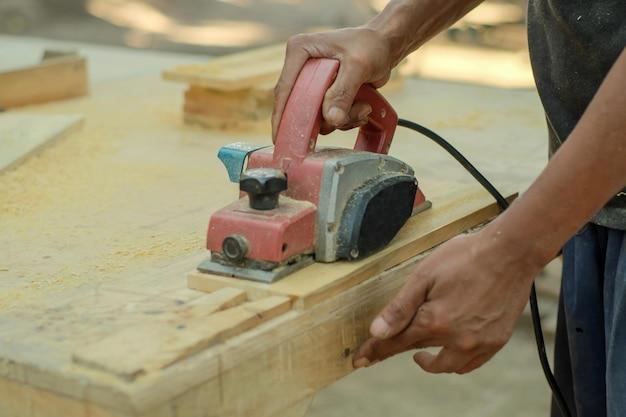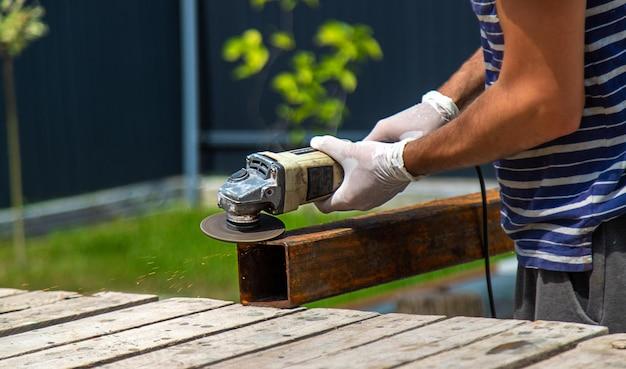If you’re a DIY enthusiast, chances are you’ve heard of Bondo. This trusted body filler is a lifesaver when it comes to repairing dings, dents, and other imperfections on your car or other surfaces. But how long should Bondo set before sanding? That’s a question we’re here to answer!
In this comprehensive guide, we’ll not only provide you with the optimal waiting time before sanding your Bondo, but we’ll also cover related questions like the best surface to mix Bondo on, whether you should primer before body filler, and more. So, whether you’re a novice or an experienced professional, buckle up and get ready to enhance your Bondo skills in 2023!
How Long Should Bondo Set Before Sanding
Understanding the Time Game for Bondo
If you’re a DIY enthusiast or have ever attempted to repair a car, chances are you’ve heard of Bondo. This magical substance has the power to transform dents and dings into smooth surfaces that would make any car owner proud. But before you can achieve that flawless finish, you need to know the golden rule: patience is key. So, how long should Bondo set before sanding? Let’s dive into this marvelous time game!
Setting the Stage: Bondo 101
Before we get into the nitty-gritty, here’s a quick Bondo 101 lesson for the uninitiated. Bondo, also known as automotive body filler, is a putty-like substance that’s used to repair damaged or dented areas on vehicles. It’s a blend of polyester resin and a hardening agent, typically a cream hardener. When these two ingredients mix, a magical chemical reaction occurs, transforming Bondo from a mushy mess into a rock-solid surface that’s ready for sanding.
Time Waits for No Bondo
So, how long does Bondo need to set before you can bust out the sandpaper and start smoothing things out? Well, the answer, my friend, lies in the hands of the weather gods. Generally speaking, Bondo takes around 20 to 30 minutes to harden. However, variables like temperature and humidity can play a sneaky game with your patience.
Playing with Temperature
Temperature, ah, the ultimate dancing partner of Bondo! If you’re working on a scorching hot summer day, Bondo will work its magic faster than you can say “sunscreen.” On the other hand, if Jack Frost decided to pay a visit, you might find yourself twiddling your thumbs for a bit longer. Ideally, you want the ambient temperature to be around 75°F (24°C) to ensure that Bondo sets in a reasonable timeframe.
Humidity: The Sneaky Culprit
Ah, humidity, the sneaky culprit that loves to mess with your plans. High humidity levels can slow down the drying process, leaving you tapping your fingers impatiently. But worry not, my friend! If you happen to find yourself in a humid environment, you can use a hairdryer on a low setting to speed up the Bondo-setting time. Just make sure not to overdo it or else you might risk creating a hot mess that requires even more repairs.
Waiting: An Art Worth Mastering
So now you know the secret timing dance of Bondo, how do you know when it’s ready for sanding? Well, the key is to wait till Bondo reaches its full hardness. You can test this by gently pressing your finger onto the Bondo surface. If it’s firm and doesn’t leave an indent, congratulations! You’re ready to whip out that sandpaper and give Bondo the royal treatment.
Don’t Rush, Grasshopper
One crucial thing to keep in mind is that impatience is not your friend when it comes to Bondo. Rushing the process can lead to disastrous consequences, like sanding off the Bondo before it has fully hardened. Not only will this create a mess, but it also means you’ll need to start the process all over again. So, take a deep breath, find your zen, and let the Bondo work its magic at its own pace.
In Conclusion: A Symbiotic Relationship
The relationship between Bondo and time is a delicate dance. While it typically takes around 20 to 30 minutes for Bondo to set, external factors like temperature and humidity can influence this timeframe. Be patient, my fellow DIYers, and give Bondo the time it needs to work its magic. Wait until it’s firm to the touch, and then unleash your sanding prowess. Remember, in the world of Bondo, timing is everything. Happy repairing, and may your dents be forever banished!
FAQ: How Long Should Bondo Set Before Sanding
If you’re into DIY car repairs or restoring old vehicles, you’ve probably come across Bondo as a go-to body filler solution. It’s a handy product that can help you fix dents, dings, and imperfections on your car’s surface. However, knowing the proper timing for sanding Bondo is crucial for achieving flawless results. In this FAQ-style guide, we’ll answer some burning questions and dispel common misconceptions about Bondo and its curing time.
What is the best surface to mix Bondo on
When it comes to mixing Bondo, it’s important to have a clean and smooth surface to work on. A disposable mixing board or a clean piece of cardboard works perfectly. Just make sure you clean it thoroughly to avoid any unwanted particles from mixing into your Bondo concoction.
Should you primer before body filler
Yes, it’s best to apply a primer before using body filler like Bondo. A primer provides a protective barrier between the metal surface and the filler, ensuring better adhesion and a longer-lasting repair. Plus, the primer helps prevent rust from forming underneath the filler. So, don’t skip this important step if you want your repair job to last.
Can I wet sand Bondo
Absolutely! Wet sanding is a common and effective technique used to achieve smooth and even surfaces. It helps reduce dust and gives you better control over the sanding process. Just make sure to use wet/dry sandpaper and keep the surface and sandpaper wet while sanding.
How long before you can sand body filler
Patience is key when it comes to sanding body filler. After applying Bondo, you should wait for it to fully cure before sanding. Typically, it takes around 20-30 minutes for Bondo to become firm to touch. However, it’s important to note that curing time can vary depending on factors such as temperature and humidity.
How long does Bondo take to fully cure
While Bondo may feel firm to touch within 20-30 minutes, it takes longer to fully cure. In ideal conditions, Bondo can take up to 24 hours to fully harden. Therefore, it’s recommended to wait a full day before priming, painting, or further sanding the repaired surface.
What grit sandpaper do I use for Bondo
When it’s time to sand Bondo, start with a coarse grit sandpaper, such as 80 or 120, to remove the excess filler and shape the surface. Then, gradually move to finer grits like 220 or 320 for smoothing out the imperfections. Remember to let the sandpaper do the work and apply even pressure for the best results.
Do you have to paint over Bondo
It’s not mandatory to paint over Bondo, but it’s highly recommended. Painting not only enhances the aesthetics of the repair but also provides protection against the elements. It prevents moisture from seeping into the filler and guards against rust. So, give your Bondo masterpiece a fresh coat of paint to make it shine and stay protected.
Can Bondo go over primer
Yes, Bondo can be applied over primer. In fact, applying Bondo over a properly primed surface ensures better adhesion and a smoother finish. Just make sure the primer is fully dry before applying the body filler. Follow the manufacturer’s recommendations for drying time, which is usually around 30 minutes to an hour, depending on the brand.
Why is my Bondo still tacky
If your Bondo is still tacky after the recommended curing time, the most likely culprit is excessive humidity or low temperatures. Bondo cures through a chemical reaction that is hindered by high humidity and chilly temperatures. Ensure proper ventilation and choose a suitable environment for your repairs. If necessary, use a heat gun or a hairdryer on a low heat setting to speed up the curing process.
Can you add color to Bondo
Yes, you can add color to Bondo! Adding a tint or dye to your Bondo mixture can help match the color of your car surface, making the repair job virtually invisible. Just remember to mix the color in small increments and test it on a scrap piece before applying it to the actual repair area.
Do you have to sand Bondo right away
Contrary to popular belief, you don’t have to sand Bondo immediately after it’s applied. In fact, it’s better to let it cure and harden completely before sanding. Rushing into sanding too soon can cause the filler to smudge or become uneven. So take a breather, let it cure, and then let the sanding commence.
Can you paint over body filler
Yes, you can paint over body filler like Bondo. However, before painting, ensure that the repaired area is smooth, free of imperfections, and properly primed. Sand the filled area until it blends seamlessly with the surrounding surface, then apply a coat of primer before painting.
How long do you wait to sand Bondo
As mentioned earlier, it’s best to wait 24 hours for Bondo to fully cure before sanding. This ensures a solid and stable surface for sanding. Rushing the process can result in a less-than-perfect finish and may require further repair work.
Do you prime before Bondo
No, you should not prime before applying Bondo. Bondo should be applied directly to the clean and prepared surface. Remember to remove any rust or loose paint before applying the body filler for the best adhesion.
Do I need to paint over Bondo
While painting over Bondo is not necessary, it is highly recommended. Painting not only adds a polished finish to your repairs but also provides protection against the elements. Without paint, the Bondo filler is exposed and more susceptible to moisture and rust. So, grab your brushes and give it a good coat of paint for optimal results.
Can you sand Bondo the next day
Yes, you can sand Bondo the next day. In fact, waiting a full day ensures that the filler has fully cured and hardened, making it easier to sand and shape. So, set your alarm for the next day, and get ready to tackle that Bondo with your sandpaper.
What primer do I use over body filler
When it’s time to prime the repaired surface after body filler application, choose a high-quality automotive primer. Look for primers specifically designed for use on body fillers. These primers provide excellent adhesion to the filler and ensure a smooth and durable paint finish.
How long can you leave Bondo unpainted
While it’s best to paint Bondo as soon as possible, you can leave it unpainted for a short period of time. However, keep in mind that Bondo is not UV-resistant and may deteriorate if left exposed to the sun for extended periods. So, try to paint your repairs within a week for maximum protection and longevity.
When should I use Bondo
Bondoner or later, you’ll come across a dent, ding, or imperfection on your vehicle that requires some tender loving repair. And when that moment arrives, it’s Bondo to the rescue! Whether it’s small surface blemishes or more substantial damage, Bondo is your trusted companion for achieving smooth and professional-looking repairs. So, whenever those imperfections pop up, grab your Bondo and let the restoration begin!
That concludes our comprehensive FAQ-style guide on how long Bondo should set before sanding. We hope we’ve answered all your burning questions and debunked any myths surrounding this versatile body filler. Now, armed with the right information and a touch of humor, you can confidently tackle your next Bondo project. Happy repairing!

